“The childhood shows the man, As morning shows the day.” – John Milton, Paradise Regained
Anyone who follows my posts will know of my obsession with the Grizzled Skipper. Come May, I visit their stronghold at Merthyr Mawr and have done this for the past six years. Like many butterflies their numbers have dropped by alarming levels and every year a sense of duty urges me to chase their elusive flight. Last year, after a long and prolonged search I only managed to find one Grizzled Skipper. This skipper was too far away to make a good photograph but at least it provided some evidence of its tenacious survival at Merthyr Mawr. While relieved to have seen this Grizzle Skipper I was nevertheless troubled that I hadn’t seen any others. Was this the last of the Grizzled Skippers at Merthyr Mawr? This niggling thought has been burning away, etching itself in my mind. Perhaps a return to Merthyr Mawr with further sightings of this lovely and highly engaging butterfly would help relieve such fears? Perhaps even just a glimpse of its chequered wings could burnish out such insecurities?
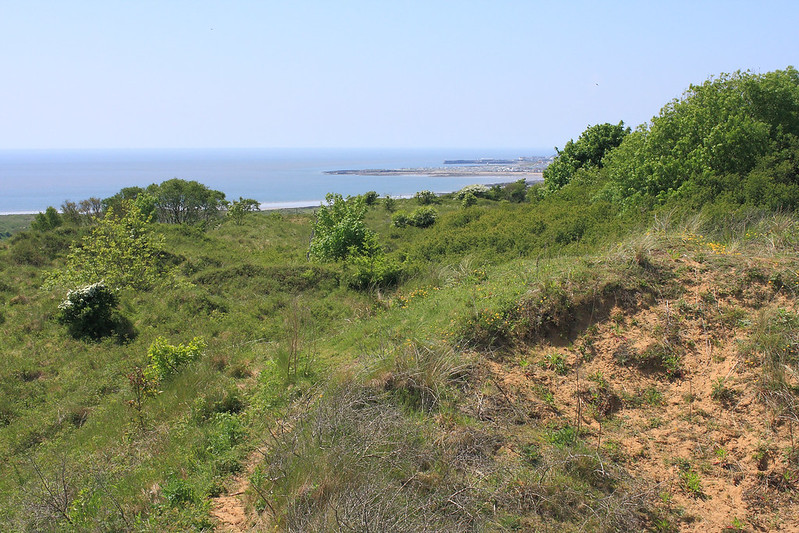
Merthyr Mawr Warren is a unique system of high, undulating sand dunes, between Bridgend and Porthcawl in South Wales. A limestone cliff has been buried by sand and the short vegetation that grows here provides an ideal habitat for the Grizzled Skippers. An unusual butterfly site because it is just a huge area of sand dunes and has fine panoramic views to Porthcawl in the west and Ogmore-by-Sea in the east.
The climb up Merthyr Mawr Warren was every bit as strenuous as I remembered. They don’t call it the ‘Big Dipper’ for nothing. It’s a steep climb up what is allegedly the second largest dune in Europe. Plodding on, my legs felt ponderous and heavy, boots dragging the sand, leaving etched, furrowed paths. With each laboured step my heart raced ahead, thumping like pulsating pistons. Gasping for air, I took a break and stopped struggling against the pull of the shifting sand.
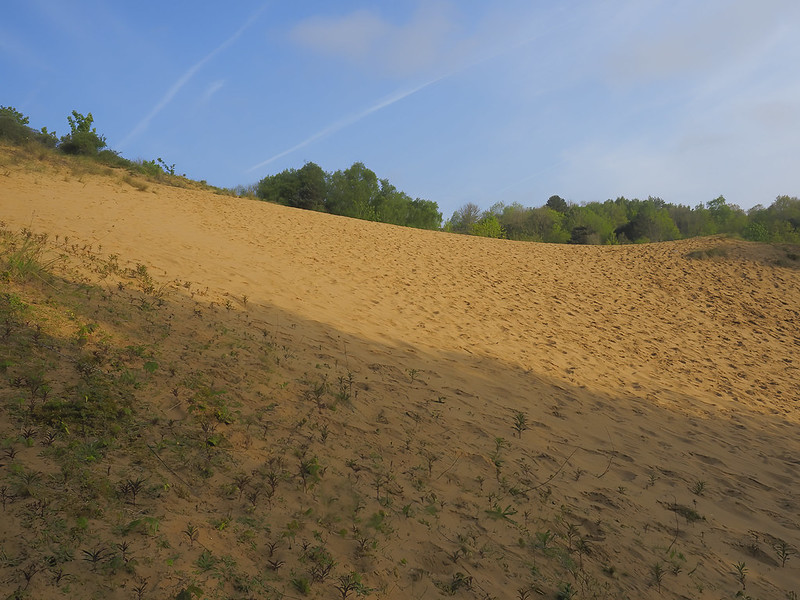
Almost reaching the top of the ‘Big Dipper’ – europe’s second highest dune, an enormous sand dune that provides an ideal micro climate for all manner of insects.
Looking down, a solitary bumble bee lay hunched-up and still-less on the sand. With head buried in the sand its wings glistened like opal jewels. I marvelled at the delicate tracery of its venation, a macrocosmic patchwork of translucent, iridescent, wafer thin panels. The bumblebee seemed either asleep or in some trance like state. Like a burning ember, a bright red tail illuminated the end of its hairy, dense black body. Red-tailed bumblebees (Bombus lapidaries) are one of the UK’s most widespread bee species. That fact however, didn’t detract from my childlike sense of wonder and discovery. I reminded myself that this bumblebee wasn’t dead or lying asleep, at least not in the human sense of the word. This dormant and resting state in insects is called torpor and it’s not exactly like sleep as we know it. During torpor, insects remain very still and don’t respond much to stimuli around them. So in a way they do sleep and like all animals with a central nervous system, their bodies do require time to rest and restore themselves. Perhaps, I reasoned that this bee was still roosting and hadn’t woken from its sleep like trance? The damp patch of sand that formed a micro-climate, provided a suitable resting place away from the blazing sun. Taking further steps, another half-buried body appeared, then another, until I had to take considerable care not to step on one.
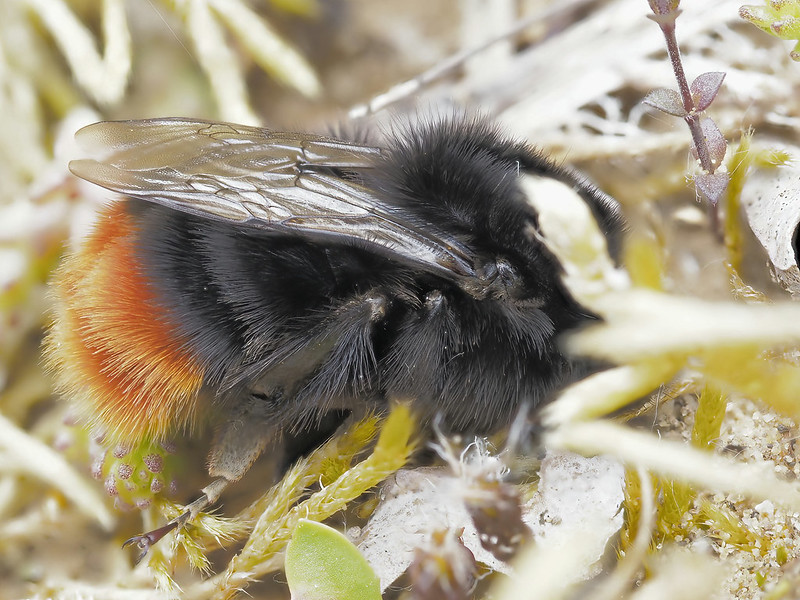
While climbing up the steep sand dune I spotted many of these Red-tailed Bumblebees. Most lay still and dormant with heads buried in the sand.
Behind my diminishing footsteps, nestled within the undulating grass covered dunes, lay the 14th century fortified Manor House of Candleston Castle. No longer an imposing monument, like a wrecked ship it lay disintegrating, floating on a sea of green hills. With each silent step, I watched its ghostly ruins slowly drown and then disappear under the tide of rising dunes. Plodding on, with weighted anticipation, I looked forward to the horizon suddenly appearing and revealing the wonderful panoramic views of the coastline. Throwing my shoulders back I loosened my ruck-sack’s straps and let it plummet to the ground. “Dam it!” I cursed – fearing that my expensive camera lenses had shattered. Fortunately, the bag’s meteoric fall had caused no more damage than a bowl shaped crater on the soft sand. It was hard, strenuous work climbing the steep sand dunes but the breathtaking scenery more than compensated for my discomfort. I had almost reached the summit with nothing ahead but blue sky and a passing, lonely, drifting cloud. Below, the remaining dunes rapidly descended into a glistening beach, sparkling bright to the rhythm of the twinkling sea.
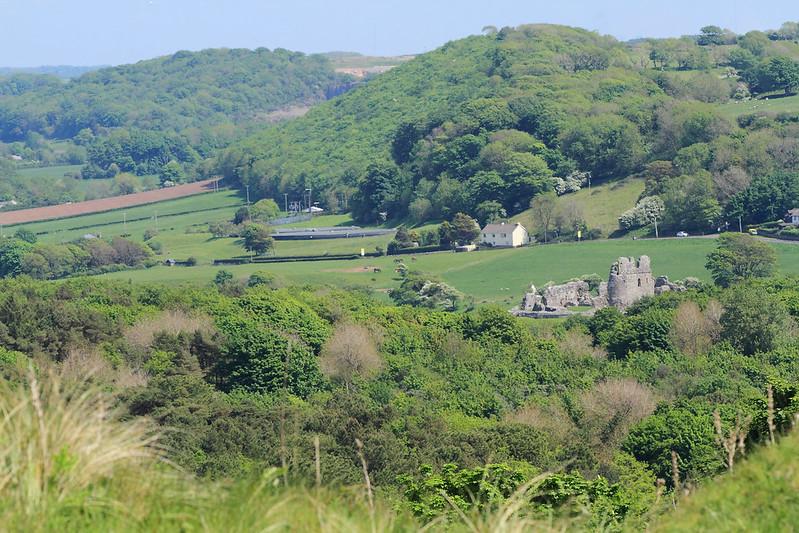
The undulating grass covered dunes, with 14th century fortified Manor House of Candleston Castle on the right.
Having no one but myself to converse with my thoughts raced ahead of me. Walking long distances alone for long periods of time can do that, especially in the wilderness. At moments such as these, when the path ahead is empty and when there is no sign of any other person, it’s easy to drift off into introspective monologues. Such intense concentration tires the mind and can eventually give way to bouts of penetrating thought. If one walks long enough without stopping this can sometimes give rise to hallucinations. Journeying “alone” can ask a lot of oneself, as anyone who has undertaken a long trip by oneself may recognise. It remains a form of travel that few will undertake. I personally have gone through significant portions of my life searching for answers, either on my motorbike or walking. Finding echoes of similar and different trips, solo and with my wife, and a life with more questions than answers. Many others have dealt with similar modes of travel for the restive mind. I believe that for each of us the experience of such travel is different, possibly a reflection of our unique selves. Perhaps this form of travel allows some of us to get to know ourselves better, something that is not always easy, but a good thing nevertheless.
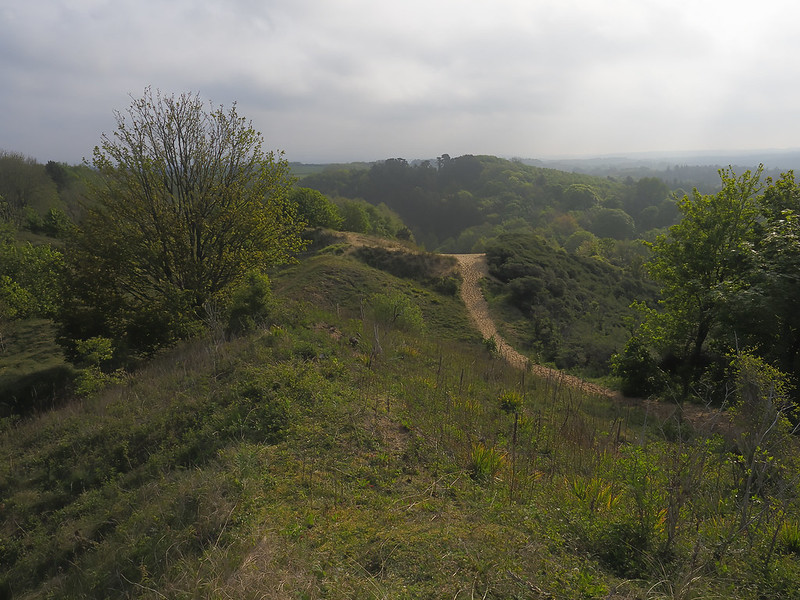
These dunes were so extensive that I had to be careful not to get lost. Lots of tracks and various circular routes were possible, although some paths were steep and walking was difficult especially with a rucksack full of camera gear!
Reaching the summit, I felt hot, very hot. In the distance I saw the shimmering haze, rising like steam from the distant dunes. Looking to the sky I caught a glimpse of a Buzzard souring high on some thermal current. It was now mid-day and all nature seemed in flux; all undergoing transition; all changing, from contracting physical solid forms into melting states of thermal expansion. Meanwhile, waiting for my head to cool down, the sun was watching me, constantly burning me with its stare. Nothing could escape its penetrating glare. Even the landscape was trying to hide away from its cosmic rays, casting tell-tale shadows, forming undulations, sculpting the distant hills. Below me, stretched the vast sea. Bright and vast, it had nowhere to hide. Extending as far as my eyes could see, it appeared bleached and blinded by the sun’s celestial brightness.
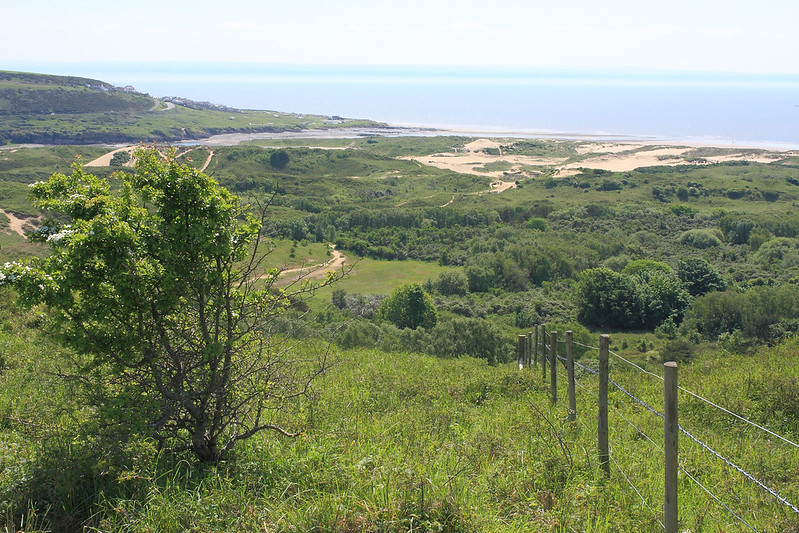
Reaching the top of Merthyr Mawr Warren, the perspiration and sweat of climbing this steep dune was worth it. The panoramic view was breathtaking with Porthcawl in the west and Ogmore-by-Sea in the east. The undulating sand dunes and twinkling sea in the distance add to a sense of vastness. Yet huddled up, somewhere within the seclusion and protection of the dunes, is a rich diversity of wildlife, not least the sun loving Grizzled Skippers.
After a much needed drink, I composed myself and focussing on the task ahead, reminding myself of my quest to find the Grizzled Skipper. Fluttering, somewhere within the seclusion and protection of the dunes, I hoped to find the sun loving Grizzled Skippers.
As you can see, I was not disappointed! Not only did I spot one… but two, three! … Dare I say, a healthy colony of Grizzled Skippers gracing the sky with their areal acrobatics, The Paradise that seemed lost had been regained!
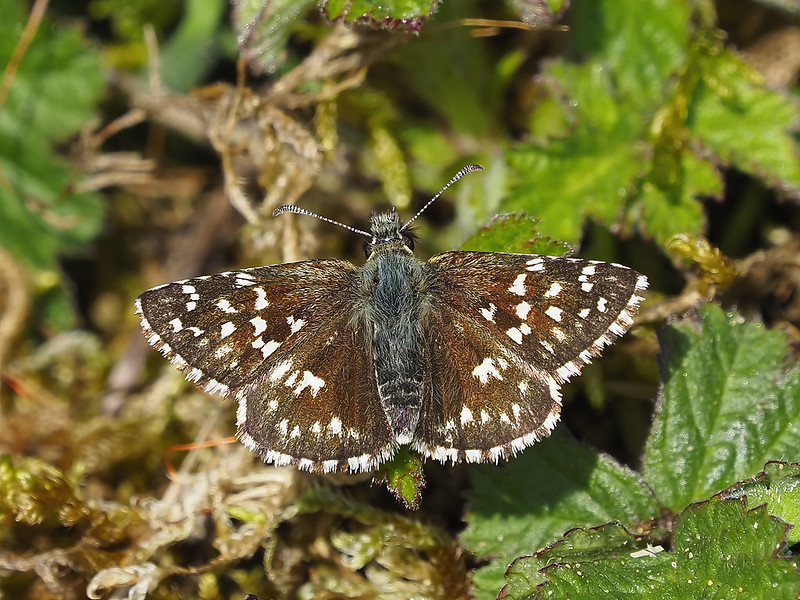
Resting on leaves of Wild Strawberry.
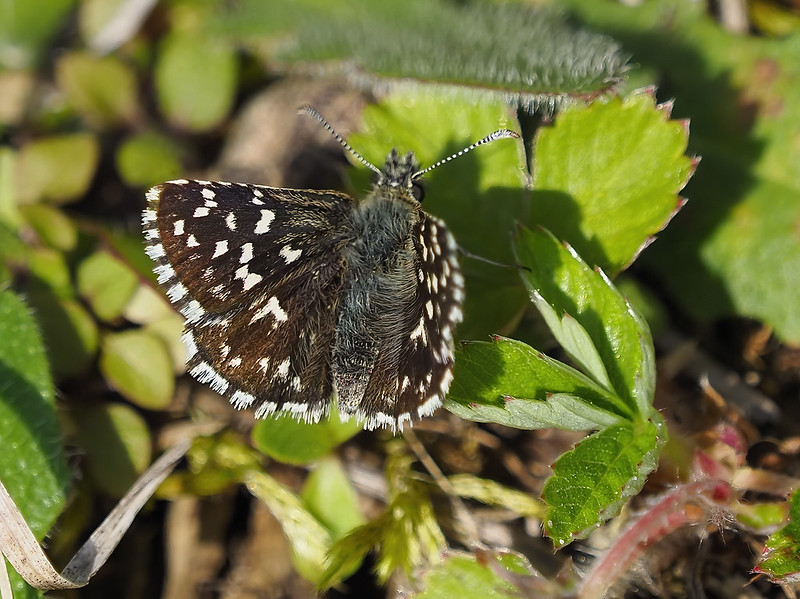
Egg-laying on Wild Strawberry
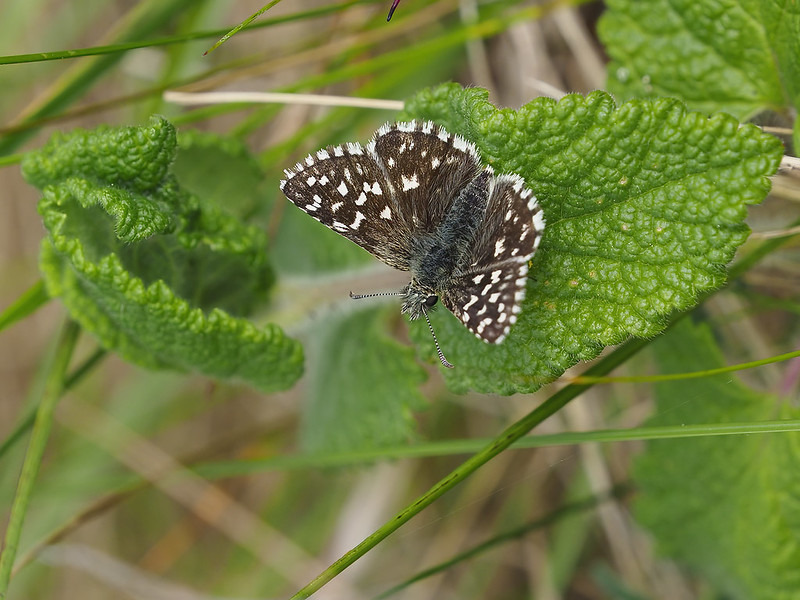
Alert and ready for action, this perching male is looking for females while guarding-off potential males

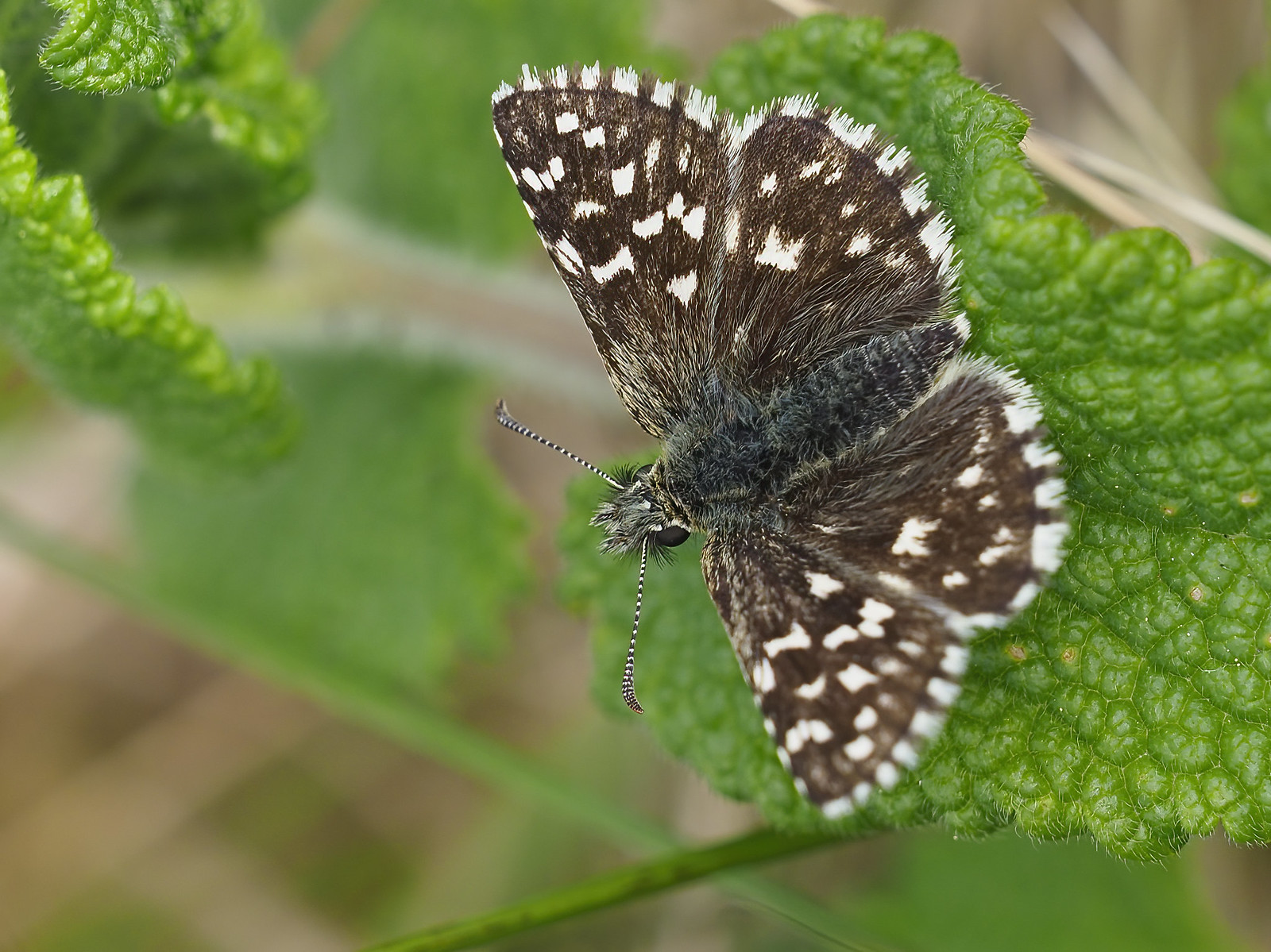
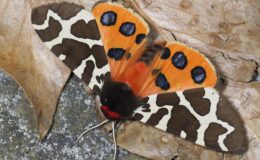

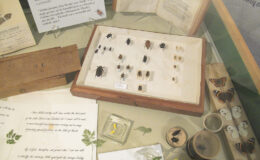
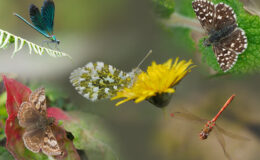
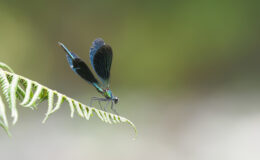
Leave a Comment